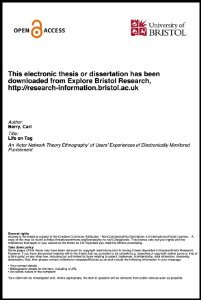By Jane Mitchell
In today's polarized political climate, criminal justice reform remains one of the few issues that spans partisan divides. Voices from across the political spectrum agree: the United States needs a new approach to incarceration. Our current system of mass incarceration is costly, ineffective, and inequitable. It perpetuates intergenerational cycles of crime and poverty and pushes communities deeper into destitution.
This Article proposes a radically new approach. It presents a diversionary alternative-to-prison model for people facing serious felony charges — the majority of the prison population today. The approach calls on courts to divert felony offenders away from prison toward 501c3-run campuses. Instead of going to prison, offenders live and learn at a residential campus for one to three years. While there, they engage in a holistic, evidence-based program targeting their individual needs. In exchange for completing the program, participants have their prison sentences suspended and records expunged. Participants return home with the skills, mindsets, and support networks needed to succeed in modern society. Critically, government agencies hold campuses accountable for outcomes using an administrative structure similar to that used by high-performing urban charter schools — incentivizing stakeholders to reduce recidivism and alleviate poverty.
After laying out the model on paper, this Article presents a case study of The Reset Foundation ("Reset"), a non-profit organization I launched to pilot the model in the San Francisco Bay Area from 2013 to 2018. Reset's experience suggests the model is a potentially powerful one for diverting felony offenders away from prison toward better life outcomes: with its first cohort of ten students, Reset eliminated ninety years of prison time. The case study simultaneously shows the complexities and challenges of implementing a model as comprehensive and systemic as this. To increase the chances of successful adoption, the public sector should instigate this work, not the non-profit sector, with significant support from local communities.
Kentucky Law Review, Volume 113, No. 2 (2025), 63p.









